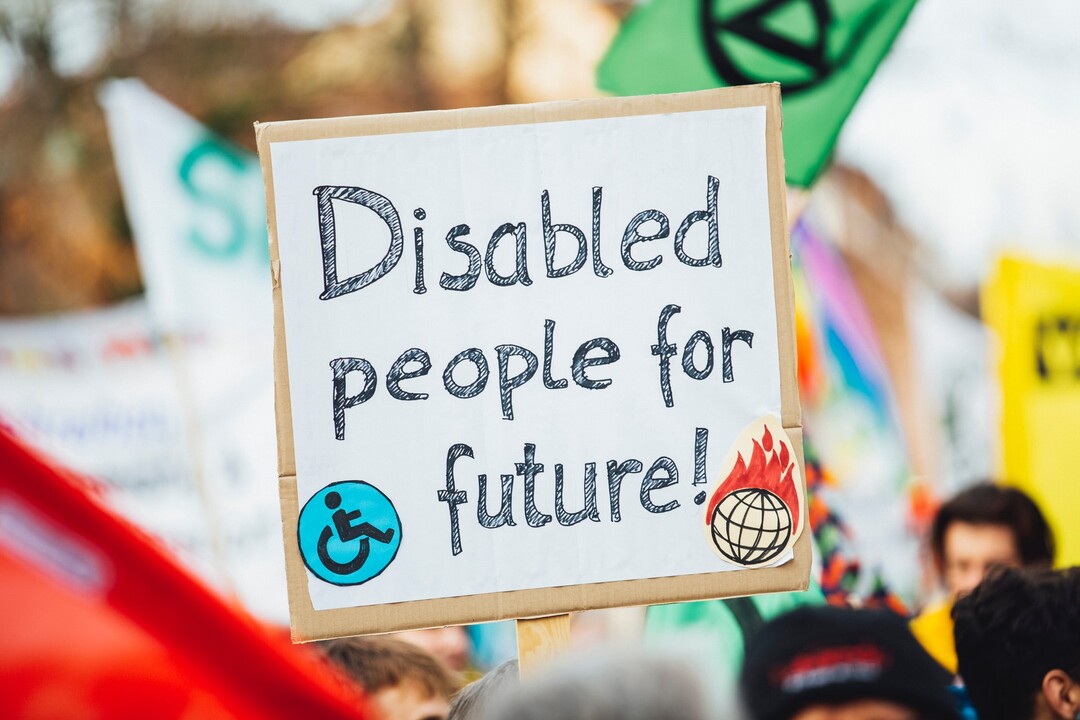Powering Inclusion: Artificial Intelligence and Assistive Technology

On Nov 3, I had the privilege of facilitating Powering Inclusion: AI and Assistive Tech, an online expert roundtable on artificial intelligence and assistive technology. This expert roundtable was part of the Future Tech research and innovation stream of the AT2030 Programme, a UKAid-funded initiative to find ‘what works’ to bring assistive technology to more people.
The roundtable was hosted by UNESCO’s International Research Centre on Artificial Intelligence (IRCAI), UCL’s Global Disability Innovation (GDI) Hub, the European Disability Forum, UCL Department of Science, Technology, Engineering, and Public Policy (STEaPP), and the Jožef Stefan Institute.
This was a great opportunity to engage with industry leaders, innovators, entrepreneurs, policymakers, and most importantly AT users in a collective exercise to harness the power of AI for disability inclusion.
It is estimated that by 2050 two billion people would benefit from Assistive Technology, yet 90% will not have access.
The World Health Organization (WHO) estimates that by 2050 two billion people will need AT, yet 90% will not have access. This is why the AT2030 programme is engaged in testing research, innovation, policy, and building community solutions to see what works in addressing that enormous challenge.
At the online roundtable, we explored four thematic areas where AI technology can create opportunities for new types of AT (such as Microsoft’s SeeingAI project), and also where AI can help improve access to AT (e.g. by optimising logistics of provision). The areas we explored were AI and communication, AI and mobility, Ai and improving information, and finally, the much-celebrated AI for new and emerging technologies. I learned a lot. This conversation sparked tremendous curiosity on how to harness all of that powerful AI tech to make our world more accessible.
Retrofitting is out, user-centred design is in
A good friend of mine asked me, rightly so, why was I interested in the “next shiny thing,” while we have yet to resolve many basic access issues for disabled people around the world. Peter is right about this, there is still a long way to go. But I also believe there is tremendous potential to make current tech more accessible and to get the future tech right. Gone are the days of retrofitting. User-centred design is in.
It's all about the ecosystems. AI can facilitate interactions for people with disabilities, but it is only one of the many tools we have to ensure accessibility.
There was another crucial point discussed in our roundtable. The need to understand AI can indeed make life more accessible, but it is all about the ecosystem. AI can facilitate how people with disabilities interact with AT and can make AT smarter and more user-centred, but AI is only one of the tools we have at our disposal.
In this post, I’ll share some of my notes from the meeting. One key point about each thematic area. The team and I are working on a shinny report which will be published by the end of the year. In the meantime, I hope you enjoy reading about this!
Communications
AI tech can help strengthen the accuracy of prediction techniques. Why is this important? Increasing prediction and accuracy enables people with disabilities to the same as many keystrokes as possible. It minimises typing and facilitates communication in general.
Mobility
AT has the potential to enhance digital manufacturing. The more data points we have, the more consistent, efficient, and faster digital manufacturing of AT can be. Some people are wary of digital manufacturing in AT, but the possibilities of building bespoke AT devices whilst improving the AT user and provider’s experience is worth exploring!
Improving information
AI can help us enable better access to information. This includes having better inputs from users. By reducing the asymmetry of information, AT users can make better decisions about their AT.
New and emerging technologies
it’s all about how this novel tech can be personalised and co-designed. An excellent reminder that AT users need to be included throughout the entire process. Retrofitting is not a good policy for technology. Keep users engaged and learn from them.
Thank you for reading!
Keep an eye out for our upcoming report on AI and Assistive Technology: Powering Inclusion.